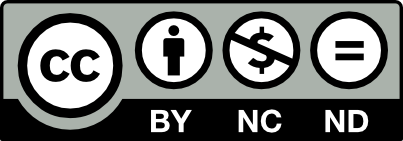Por favor, use este identificador para citar o enlazar este ítem:
http://hdl.handle.net/10609/151125
| Título : | Sobre los límites del humor: catarsis y contracatarsis en el programa ‘Euskalduna naiz, eta zu? Espainia’ de ETB |
| Autoría: | Nazabal Etxebeste, Maddi |
| Tutor: | Garde Cano, Cristina |
| Resumen : | Este Trabajo Fin de Máster se presenta como intento de profundizar en los límites del humor en la sociedad actual. El camino que se propone para ello se realiza de la mano de los conceptos/fenómenos de catarsis y contracatarsis. La catarsis se define como una purificación colectiva, basada en la incongruencia del humor, la inmersión en un mundo compartido y el uso de ironía, sarcasmo y cinismo que se unen especialmente en la sátira. La sátira por su parte se introduce como género humorístico que se basa en los estereotipos y en el costumbrismo para ofrecer una lectura crítica de la realidad. En contraste, la contracatarsis es presentada como una herramienta de hegemonía discursiva, con sus propios catalizadores, entre ellos la nostalgia, la folklorización y el auge del reaccionarismo. Se examina su papel en la censura contemporánea, la cultura de la cancelación y la autocensura, destacando los aparatos y medios de difusión de la hegemonía. El estudio ofrece un análisis práctico del programa "Euskalduna naiz, eta zu? Espainia", justificando la muestra y proporcionando un contexto de la sátira política en el País Vasco. Se aplican ACD y CPL para analizar los resultados de la catarsis en el programa y la contracatarsis en el informe sobre el capítulo presentado por Covite —Colectivo de Víctimas del Terrorismo—, detallando los hallazgos en gráficas resumen. |
| Palabras clave : | humor catarsis contracatarsis sátira censura |
| Tipo de documento: | info:eu-repo/semantics/masterThesis |
| Fecha de publicación : | 24-jun-2024 |
| Licencia de publicación: | http://creativecommons.org/licenses/by-nc-nd/3.0/es/  |
| Aparece en las colecciones: | Trabajos finales de carrera, trabajos de investigación, etc. |
Ficheros en este ítem:
| Fichero | Descripción | Tamaño | Formato | |
|---|---|---|---|---|
| mnazabalTFM0624memoria.pdf | Memoria del TFM | 628,86 kB | Adobe PDF |  Visualizar/Abrir |
Comparte:
 Google Scholar
Google Scholar
 Microsoft Academic
Microsoft Academic
Este ítem está sujeto a una licencia Creative Commons Licencia Creative Commons


